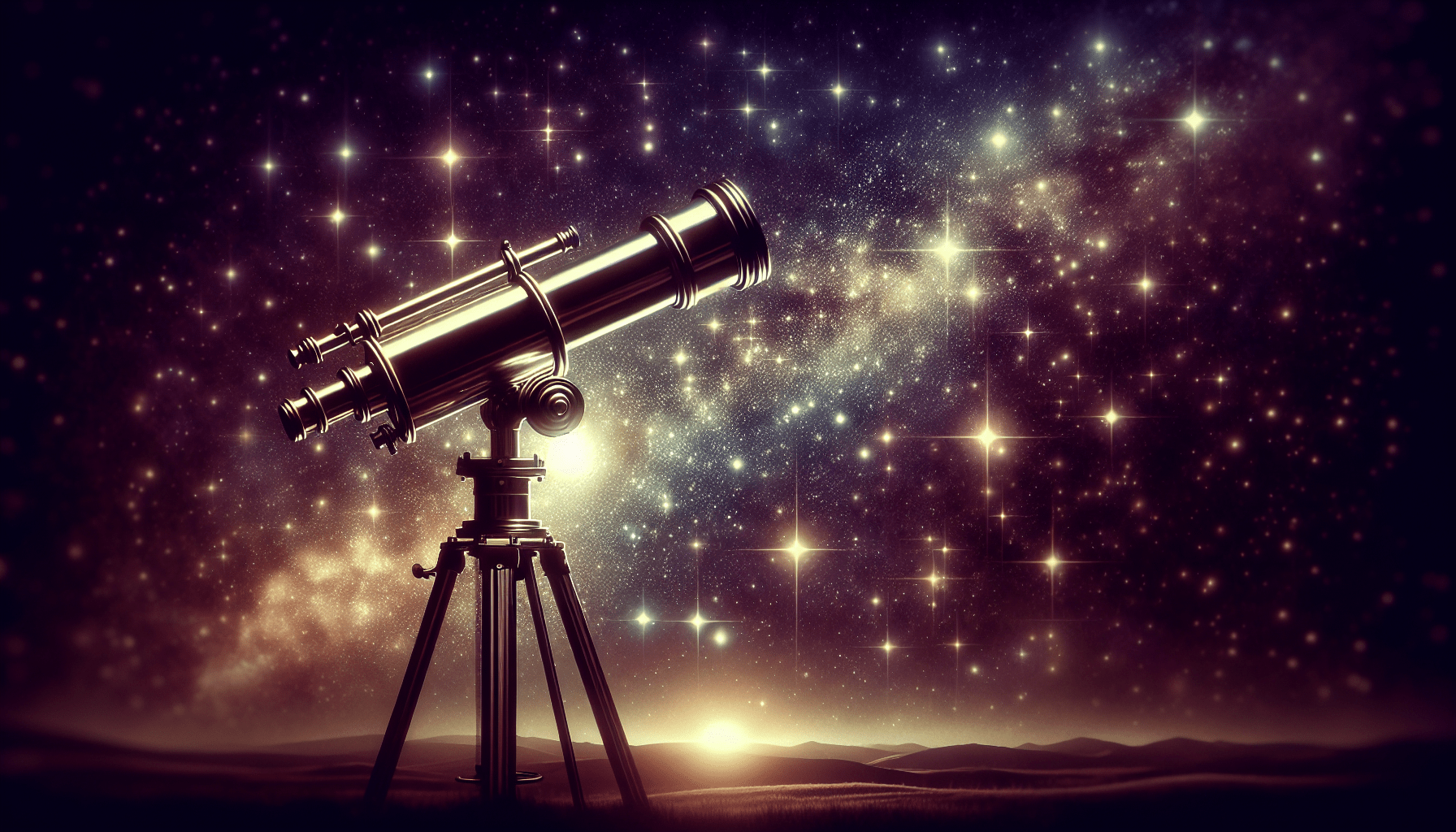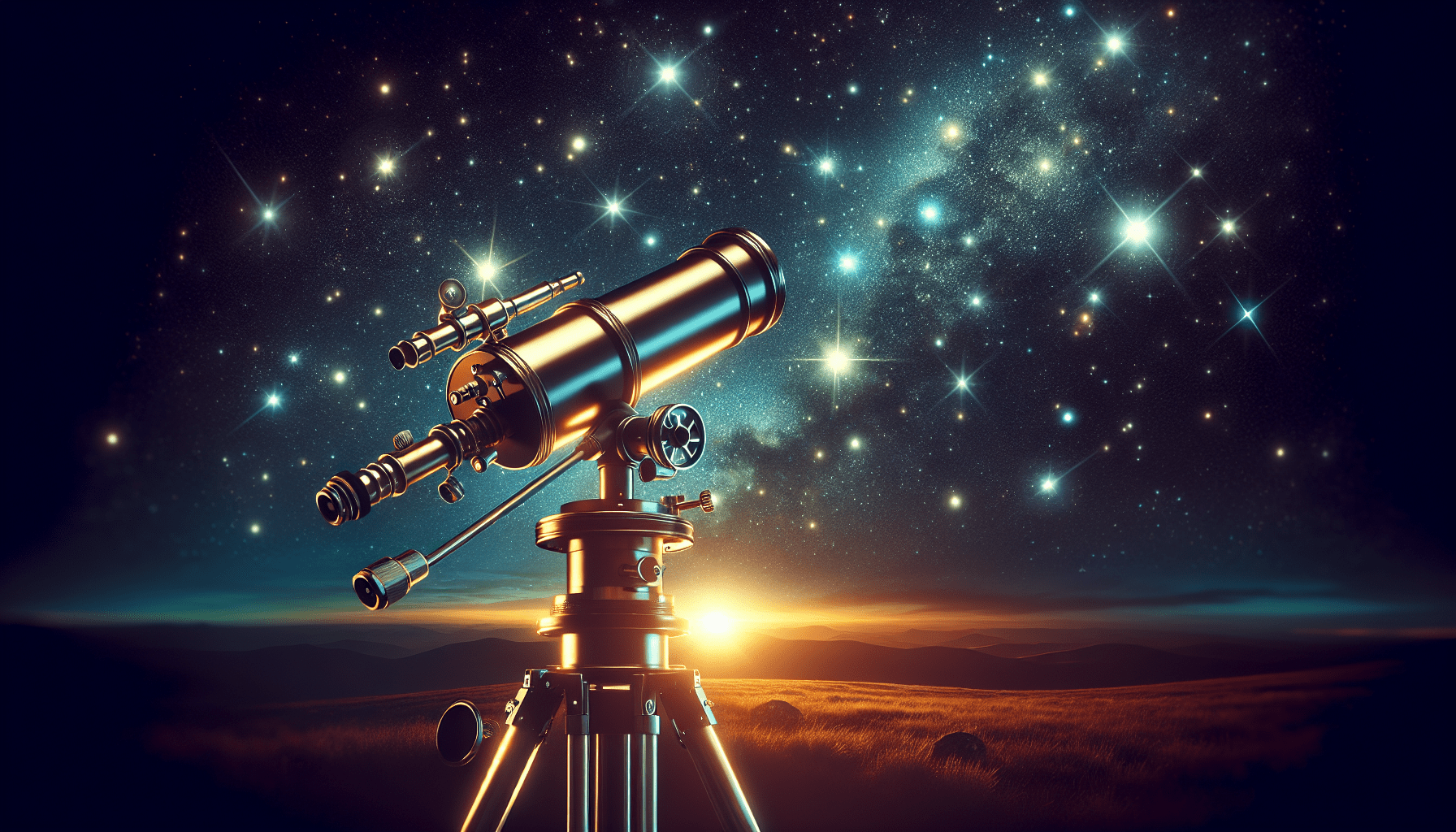How to align a telescope. So, you’ve finally gotten your hands on a shiny new telescope and can’t wait to explore the wonders of the night sky. But before you can embark on your stargazing journey, there’s one important step you need to tackle – aligning your telescope. Don’t worry, it’s not as daunting as it sounds! In this article, we’ll guide you through the simple and essential process of aligning your telescope, ensuring that you get the most out of your celestial adventures. From understanding the different types of alignment to mastering the art of polar alignment, we’ve got you covered. Get ready to unlock the secrets of the universe with your perfectly aligned telescope!

Table of Contents
Materials Needed
To align your telescope properly, you will need a few essential materials:
Telescope
The first and most crucial material is the telescope itself. Make sure you have a telescope that is in working condition and assembled correctly.
Eyepieces
Eyepieces are necessary for adjusting the magnification and focusing on different celestial objects. Ensure you have a variety of eyepieces for different viewing experiences.
Finder Scope
A finder scope is a smaller telescope attached to the main telescope. It helps you locate and center objects before viewing them through the main telescope.
Mount
A mount holds the telescope steady and allows for smooth movement. Make sure your mount is compatible with your telescope and sturdy enough for stability.
Bubble Level
A bubble level is used to ensure that the mount is level. This is important for accurate tracking and alignment.
Collimation Tools (optional)
Collimation tools are only necessary for reflector telescopes. They help align the mirrors within the telescope for clear and sharp images. If you have a reflector telescope, consider investing in collimation tools.
Choosing the Right Location
To align your telescope successfully, you must choose the right location. Follow these tips for selecting the best spot:
Find a clear and open area
Look for a location away from trees, buildings, and other obstacles that may obstruct your view of the night sky. A clear and open area will provide you with an unobstructed view of celestial objects.
Avoid places with bright lights
Bright lights can interfere with your observations and make it challenging to see faint objects in the night sky. Choose a location away from streetlights, porch lights, and other sources of artificial light.
Ensure a stable surface for the telescope
The surface on which you place your telescope should be stable and level. Avoid setting up on uneven or soft ground that may cause vibrations or instability. A sturdy tripod can help provide a stable surface for the telescope.
Consider the surrounding landscape
Pay attention to the surrounding landscape when selecting a location. Consider the direction of the terrain and any potential obstructions that may block your view. A location with a clear and wide-open view of the sky is ideal for aligning your telescope.
How to align a telescope
Setting Up the Telescope
Before aligning your telescope, you need to ensure that it is properly set up. Here are the steps to follow:
Unpack and assemble the telescope
If your telescope is not already assembled, carefully unpack it and follow the manufacturer’s instructions to put it together correctly. Double-check that all the components are securely attached.
Attach the mount to a tripod
Securely attach the mount to a tripod or a stable surface. Ensure that the mount is firmly in place and that all locking mechanisms are tightened.
Securely attach the telescope to the mount
Attach the telescope to the mount, making sure it is securely fastened. Double-check all the connections and make any necessary adjustments to ensure stability.
Install the eyepiece and finder scope
Insert the appropriate eyepiece into the telescope’s focuser. This will determine the magnification level of your view. Additionally, attach the finder scope to the main telescope, aligning it parallel to the eyepiece. This will help you locate objects before observing them through the main telescope.
Leveling the Telescope
A leveled mount is crucial for accurate alignment. Follow these steps to level your telescope:
Use a bubble level to ensure the mount is level
Place a bubble level on the mount and adjust the tripod legs until the bubble is centered. This ensures that the mount is level, which is essential for accurate tracking.
Adjust the tripod legs as needed
If the bubble level indicates that the mount is not level, adjust the tripod legs accordingly. Extend or retract the legs to achieve a level position.
Check the bubble level again for accuracy
After adjusting the tripod legs, recheck the bubble level to ensure that the mount is now perfectly level. Repeat this process until the bubble remains centered.
Aligning the Finder Scope
The finder scope helps you locate objects before viewing them through the main telescope. Follow these steps to align your finder scope:
Choose a distant, stationary object as the target
Select a distant object, such as a tree or building, that is stationary and easily visible in the daytime. This will act as your target for aligning the finder scope.
Center the object in the finder scope
Look through the finder scope and adjust the alignment knobs or screws until the object you selected is centered in the crosshairs or reticle of the finder scope.
Adjust the finder scope alignment screws if needed
If the object is not centered in the finder scope, use the alignment screws or knobs to make small adjustments until it is perfectly centered. Take your time and be patient during this process.
Calibrating the Finder Scope
Once your finder scope is aligned, you need to calibrate it with your main telescope. Follow these steps:
Select a bright star or planet as the target
Choose a bright star or planet that is visible in the night sky. This will act as your calibration target for aligning the telescope with the finder scope.
Use the finder scope to align the telescope
Look through the main telescope and use the finder scope to guide you towards the selected star or planet. Adjust the telescope’s position until the object is within the field of view.
Adjust the finder scope alignment screws to match
If the object is not in the center of the main telescope, use the finder scope’s alignment screws or knobs to make small adjustments until the object is perfectly aligned with the telescope.

Using Star Alignment
star alignment is an essential step in aligning your telescope accurately. Follow these steps:
Select three bright stars in the night sky
Choose three bright stars that are evenly spaced apart in the night sky. The stars should be easily identifiable and visible from your location.
Use the telescope to align each star in the center
One by one, point your telescope towards each star and use the eyepiece to center the star in the field of view. Take note of the adjustments necessary for each star.
Adjust the mount’s alt-azimuth controls as necessary
Use the mount’s alt-azimuth controls (usually visible knobs or screws) to adjust the position of the telescope. Center each star as accurately as possible by making small adjustments.
Perform minor adjustments with the finder scope
If necessary, use the finder scope to make minor adjustments to ensure that each star is perfectly centered. This will help fine-tune the alignment process.
Collimating the Telescope
Collimation is only necessary for reflector telescopes. Follow these steps to collimate your telescope:
Only required for reflector telescopes
Reflector telescopes have mirrors that may require alignment for optimal performance. If you have a refractor or compound telescope, skip this step.
Follow specific collimation instructions for your telescope
Consult your telescope’s manual or manufacturer’s instructions for the proper collimation procedure. Different telescopes may have specific steps or tools needed for collimation.
Fine-tune the alignment of the primary and secondary mirrors
Make small adjustments to the primary and secondary mirrors to ensure they are aligned correctly. This will improve the image quality and clarity of your telescope.

Testing and Adjusting
Once your telescope is aligned, it’s time to test and adjust to ensure optimal viewing. Follow these steps:
Choose a target (star, planet, or celestial object)
Select a target object such as a bright star, planet, or other celestial objects that are visible in the night sky. Make sure it is within your telescope’s capabilities.
Use different eyepieces for different magnifications
Experiment with different eyepieces to achieve different magnifications and get a variety of views. This will allow you to explore various details in the celestial object.
Adjust the focusing mechanism for a clear image
Use the focusing mechanism on your telescope to achieve a sharp, clear image. Make small adjustments until the object comes into clear focus.
Make any necessary adjustments in the finder scope
If you are having trouble locating or centering the object, use the finder scope to make small adjustments. This will help you fine-tune the positioning of the telescope.
Maintenance and Repeat Alignment
To ensure optimal performance, regular maintenance and repeated alignment are necessary. Follow these tips:
Regularly check and maintain the alignment of the telescope
After each use, check the alignment of your telescope. Make any necessary adjustments or recalibrate if needed. Regular maintenance will ensure accurate alignment and better viewing experiences.
Repeat the alignment process if necessary
If you notice a significant shift in alignment or have moved your telescope to a new location, it may be necessary to repeat the alignment process. This will ensure accuracy and precision in your observations.
Store the telescope properly to avoid misalignment
When storing your telescope, make sure to secure all components and cover it to protect it from dust and debris. By storing it properly, you minimize the risk of misalignment and damage.
Aligning a telescope can be a rewarding but precise process. By following these steps and taking your time, you can ensure optimal alignment and enjoy stunning views of the night sky. So grab your telescope, find the perfect location, and get ready to explore the wonders of the universe!

Related site – How to Master Polar Alignment on Your Mount
